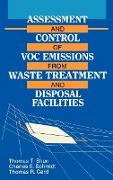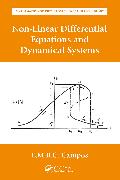- Start
- Assessment and Control of Voc Emissions from Waste Treatment and Disposal Facilities
Assessment and Control of Voc Emissions from Waste Treatment and Disposal Facilities
Angebote / Angebote:
Assessment and Control of VOC Emissions from Waste Treatment and Disposal Facilities Thomas T. Shen, Ph.D., Charles Schmidt, Ph.D., and Thomas Card The complications surrounding Volatile Organic Compound (VOC) emissions have emerged as a matter of increasing environmental attention and concern, due largely to the huge quantities involved, their known toxicity, and their suspected carcinogenicity. Assessment and Control of VOC Emissions from Waste Treatment and Disposal Facilities is the first book to both thoroughly explore the topic and present the entire range of environmentally and economically viable solutions. The authors address the most recent developments, the newest applications, and the latest methodological advances in the field. The book includes sections on: waste characterizations, such as vapor pressure, solubility, molecular weights, and moreemission mechanisms including volatilization, hydrolysis, photodecomposition, biodegradation, and incinerationvarious types of VOC emission sourcesthe latest regulatory information on The Resource Conservation and Recovery Act (RCRA), The Comprehensive Environmental Response, Compensation, and Liability Act (CERCLA), and the Clean Air Act (CAA)the entire range of measuring and monitoring approaches for assessing VOC emission ratesVOC pathway analysestoxicity, exposure, and basic information about conducting health risk assessmentsall available control technologies and their costselaborate, mathematical models and real-life case studiesAssessment and Control of VOC Emissions from Waste Treatment and Disposal Facilities is ideal as both a reference and a training text for regulatoryengineers, facility environmental managers, and anyone involved in atmospheric sciences. This field-guide and teaching text is invaluable to a wide cross-section of professionals, educators, and students in the chemical, petroleum, and environmental regulatory communities.
Folgt in ca. 15 Arbeitstagen



